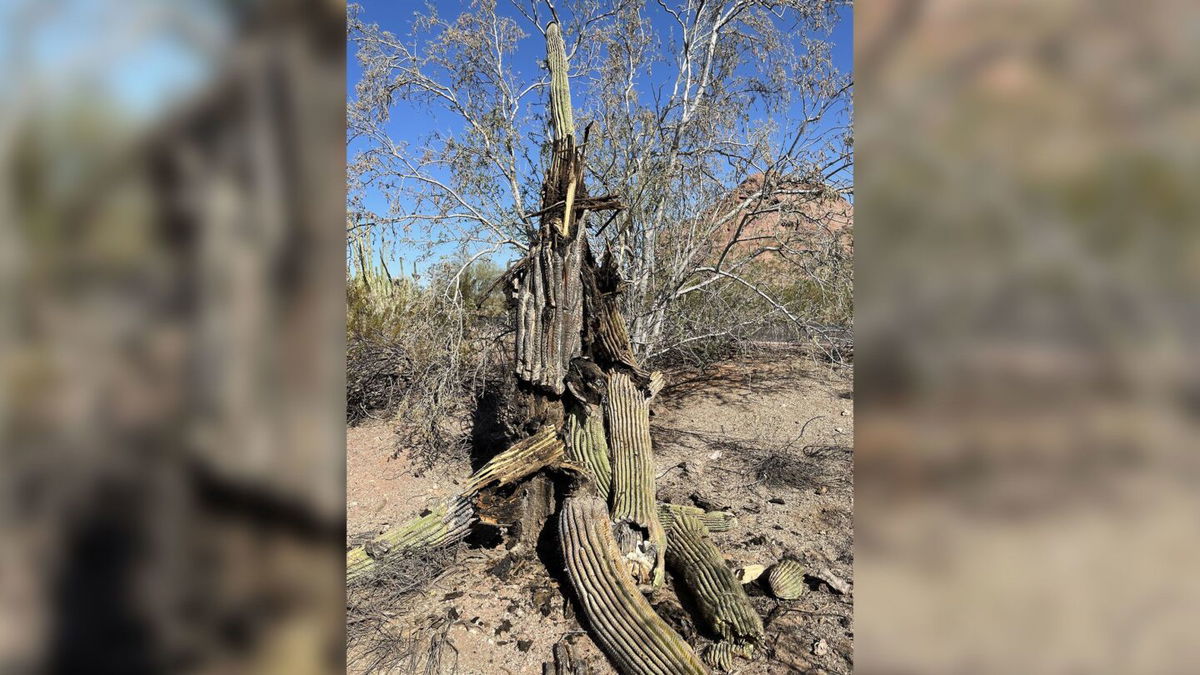Phoenix’s record heat is killing off cactuses

Saguaro cactuses that are stressed by extreme weather and lack of water can begin to rot from the inside and eventually lose limbs or collapse.
By Macie Goldfarb, CNN
(CNN) — At a botanical garden in Phoenix some cactuses can’t take the heat.
Record-high temperatures in Arizona, combined with a lack of seasonal monsoons, have caused saguaro cactuses at the Desert Botanical Garden to become “highly stressed,” according to Chief Science Officer Kimberlie McCue. She said a saguaro can appear “fairly normal” or feel somewhat squishy before it suddenly collapses and reveals it has been rotting from the inside out due to heat-related stress.
Every February, the Desert Botanical Garden takes inventory of its saguaro cactuses and assesses each one’s condition. McCue said since 2020, when record temperatures caused stress in many of the saguaros, she and her team have seen more of the garden’s cactuses die. Present-day heat records are sending some of those previously affected cactuses over the edge, causing them to lose limbs and even collapse.
Wednesday night ended a record streak of 16 days above 90 degrees in Phoenix. The city is forecast to see temperatures over 110 degrees again on Thursday, which would make for the 28th consecutive day.
Cactuses carry out essential functions at night. That’s when they open their stomata, or pores, and carry out a gas exchange in which they take in the carbon dioxide they use to photosynthesize during the day. But because nights in Phoenix have experienced record-high heat, McCue said this suffocates and stresses out the saguaros, which dehydrates them and makes them more susceptible to infections and insects.
Saguaros are “beautifully adapted to heat and aridity, but they have their limits,” McCue said.
Phoenix is one of nine US cities where at least 1 million people live in neighborhoods that reach eight degrees higher than surrounding areas, a Climate Central analysis showed. But down in Tucson, where temperatures are slightly lower but still surpassing 100 degrees, plant admirers like Erik Rakestraw aren’t seeing the same distress in local saguaros. He attributes the perseverance of Tucson’s cactuses to the lack of a “heat island” effect that Phoenix is experiencing.
Rakestraw, curator of botany at the Arizona-Sonora Desert Museum, said domesticated plants near walls – rather than wild ones – are more likely to experience negative effects due to reflective heat.
However, he said the biggest threat to saguaros is that as temperatures heat up over time, new generations of the cactus species will struggle to grow at all.
The-CNN-Wire
™ & © 2023 Cable News Network, Inc., a Warner Bros. Discovery Company. All rights reserved.